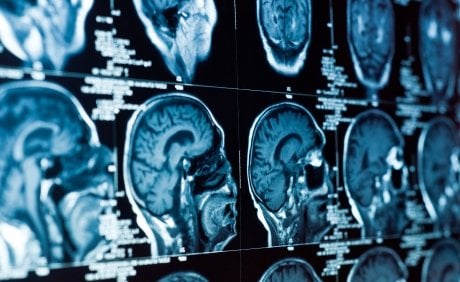Magnetic fields produced by the naturally occurring electrical currents in the brain could potentially be used as an objective test for schizophrenia and help to better understand the disease, according to new research published today.
A team of researchers from Plymouth and Spain have used the non-invasive magnetoencephalogram (MEG) technique to find two spectral features that are significantly different in schizophrenia patients compared to healthy control subjects.
Furthermore, they found that there were four spectral features in the brain signals of schizophrenia patients that changed with age compared to healthy control subjects, suggesting that schizophrenia affects the way in which brain activity evolves with age.
The study has been published in the journal Physiological Measurement.

Schizophrenia is a serious psychiatric disorder, usually starting in late adolescence, which is characterised by a range of positive and negative symptoms, including hallucinations, delusions, paranoia, cognitive impairment, social withdrawal, self-neglect and loss of motivation and initiative.
It has no objective test and is currently diagnosed by clinicians who assess patients using a defined set of criteria.
Lead author of the study Dr Javier Escudero said: “At present, there is no blood, cerebrospinal fluid, brain imaging or neurophysiological test for schizophrenia in routine clinical practice. The diagnosis relies on the interpretation of symptoms and clinical history according to consensus criteria.
“The advent of an objective marker for schizophrenia would significantly facilitate the diagnosis and offer a better understanding of the neurobiological basis of the disease.”
In this study, the frequency spectrum of the MEG background activity was analysed in 15 schizophrenia patients with positive symptoms and 17 age-matched healthy control subjects.
A range of spectral features from the MEGs were analysed to provide a holistic view of the brain activity of each subject. The MEG produced 148 values for each subject, which were subsequently divided into five different groups representing different parts of the brain, and were statistically analysed.
The researchers also investigated whether the spectral features could be used to distinguish between schizophrenia patients and the healthy controls. They showed that they were able to classify patients with 71 per cent accuracy.
“The long-term vision is to develop a low-cost, non-invasive and objective test to aid the diagnosis of this and other brain diseases. The magnetoencephalogram is able to provide very detailed information about the brain activity; however, it is expensive. Therefore, we aim to transfer these developments to electroencephalogram recordings in the future, as this technique meets those requirements of reduced cost, high availability and non-invasiveness,” continued Dr Escudero.
Notes about this schizophrenia research article
The researchers are from Plymouth University, Universidad Complutense de Madrid, Centro de Tecnología Biomédica, Hospital Universitario San Carlos and University of Valladolid.
Contact: Michael Bishop – Institute of Physics
Source: Institute of Physics press release
Image Source: The image is adapted from the Institute of Physics press release.
Original Research: Full open access research (PDF) for “Changes in the MEG background activity in patients with positive symptoms of schizophrenia: spectral analysis and impact of age” by Javier Escudero, Emmanuel Ifeachor, Alberto Fernandez, Juan Jose L´opez-Ibor’and Roberto Hornero in Physiological Measurement. Published online January 31 2013 doi:10.1088/0967-3334/34/2/265







